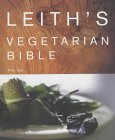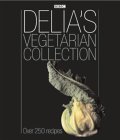|
|
||||||||||
Vegetarianism and other special diets
A page that explains a bit about Vegetarianism and other diets such as Kosher, Hindu, Halal and gives links to further information and allergies, diabetes and nutrition.
see also Vegetable Protein
Why are people vegetarian?
There are many good reasons why people choose to be vegetarian these could include:
Moral grounds - objections to the Killing of animals
Health grounds - high levels of cholesterol and hormones in meat
Fashion - fashion dictates what we eat as well as what we wear!
Religion - different world religions give guidance on what can or should be eaten
Environmental - the meat industry is said to have a negative environmental impact
Vegetarians do not necessarily want healthier food than meat eaters and there is a tendency to confuse the "Wholefooder" with the vegetarian. The general assumption is the vegetarian is more concerned about eating over-refined foods than the average meat eater. This is probably a misconception formed by the hospitality industry. The main concern when cooking vegetarian should probably be to produce food that tastes good without using any meat or animal product content. Sadly many Chefs seem to regard this as an inconvenience rather than a challenge, regarding Vegetarians as an annoyance. All we can say is WAKE UP
- Vegetarianism is a growing market
- Respect for others is the cornerstone of civilisation
- Great food does not need meat or animal fat in it
- Although its a lot easier to make food taste good when you use those unhealthy but deliciouss animal products...
Ovo-lacto vegetarian
- will
not eat meat or meat products
- will eat milk, dairy produce and eggs.
Lacto - vegetarian
will
eat milk & dairy products but not eggs
Ovo - vegetarian
includes
eggs but not dairy products
Vegan
do not
eat any meat, dairy or egg products - vegetables only
Fruitarian
(fructarian)
eat only the fruit of plants not the plant itself.
Characteristics and attention points
Vegetarian eating can meet all nutrient requirements, although some people argue that cetrtain types of protein and mineral intake are not easily obtained. Vegetarian food can have the following characteristics:
•tend to be bulky
• High water and high fibre content are common in vegetable foods.
• The ability to create interesting dishes probably requires greater imagination than cooking with meat and is often relatively time consuming.
Two main approaches are adopted -
• To produce foods that emulate meat dishes.
• To produce foods that bear no relation to meat in flavour or texture.
see Southern Indian Cookery and try Bhel Puri
Care is needed to ensure sufficient of certain nutrients
Identify the appropriate sources of:
• energy:
• calcium:
• iron:
• riboflavin:
• B12:
• vitamin D
For further Information see
Special diets:
Religious
Numerous types of special dietary or preparation requirements exist which are linked to religious practice for example:
The word "kosher" is used to describe ritual objects that are made in accordance with Jewish law and are fit for ritual use.
There is no such thing as "kosher-style" food. Kosher is not
a style of cooking. Indian food can be kosher if it is prepared in accordance
with Jewish law.
Traditional Jewish foods like knishes, bagels, blintzes, and matzah ball soup can all be non-kosher if not prepared in accordance with Jewish law.
A restaurant
that calls itself "kosher style" it usually means that it
serves traditional Jewish foods, but it almost invariably means that
the food is not actually kosher.
Why Do Jews Observe the Laws of Kashrut?
Many people think that kosher food laws are simply primitive health
regulations that have become obsolete with modern methods of food preparation.
But aome of these of the dietary laws have some health benefits - Kosher
slaughter is very sanitary.
Modern scientific knowledge shows that there is no reason why camel or rabbit meat, both non kosher (or treyf), is any less healthy than cow or goat meat. However there is some evidence that eating meat and dairy together iis not good for digestion.
The main reason why Jews observe these laws is because the Torah says
so.
Kosher can also raise the act of eating into a religious ritual.
General Rules
The details of kosher rule are extensive but the main rules are :
"1. Certain animals may not be eaten at all. This restriction includes
the flesh, organs, eggs and milk of the forbidden animals.
2. Of the animals that may be eaten, the birds and mammals must be killed
in accordance with Jewish law.
3. All blood must be drained from the meat or broiled out of it before
it is eaten.
4. Certain parts of permitted animals may not be eaten.
5. Meat (the flesh of birds and mammals) cannot be eaten with dairy.
Fish, eggs, fruits, vegetables and grains can be eaten with either meat
or dairy. (According to some views, fish may not be eaten with meat).
6. Utensils that have come into contact with meat may not be used with
dairy, and vice versa. Utensils that have come into contact with non-kosher
food may not be used with kosher food. This applies only where the contact
occurred while the food was hot.
7. Grape products made by non-Jews may not be eaten. "
Source: Judaism 101
For Kosher recipes try koshercooking.com
Hindus offer food to God first before esting it snd believe that the food can have profound impact on one's life after all one is what one eats. The Hindu compassion for all living beings, lead Hindus to be vegetarian.
"It is therefore the duty of all scripturally and morally conscientious Hindus to embrace a strictly vegetarian diet, avoiding all forms of meat, fish, and eggs." hindunet.
There are some southern Indian hindu recipes on this site
This means "something that is lawful and permitted in Islam"
For a food to be Halal(lawful) for Muslim consumption all its ingredients should be Halal.
"Haram: Haram is a Quranic term which means prohibited or unlawful. Haram foods and drinks are absolutely prohibited by Allah."
"Mushbooh: Mushbooh is an Arabic term which means suspected. If one does not know the Halal or Harm status of a particular food or drink, such a food or drink is doubtful. A practicing Muslims prevents himself from consuming doubtful things."
Source and for a list of Halal and Haram foods see A guide to Halal food selection list
The following
products are definitely Halal:
1. Milk (from cows, sheep, camels, and goats)
2. Honey
3. Fish
4. Plants which are not intoxicant
5. Fresh or naturally frozen vegetables
6. Fresh or dried fruits
7. Legumes and nuts like peanuts, cashew nuts, hazel nuts, walnuts,
etc.
8. Grains such as wheat, rice, rye, barley, oat, etc.
"Animals such as cows, sheep, goats, deer, moose, chickens, ducks,
game birds, etc., are also Halal, but they must be Zabihah (slaughtered
according to Islamic Rites) in order to be suitable for consumption.
The procedure is as follows: the animal must be slaughtered by a Muslim
(or a Jew or Christian - click
here for more). The animal should be put down on the ground (or
held it if it is small) and its throat should be slit with a very sharp
knife to make sure that the 3 main blood vessels are cut. While cutting
the throat of the animal (without severing it), the person must pronounce
the name of Allah or recite a blessing which contains the name of Allah,
such as "Bismillah Allah-u-Akbar". " Souce eat-halal.com
The symptoms of food allergies are similar to those of food intolerance
and so it is important to consult a doctor to be diagnosed correctly.
Once diagnosed, you can learn about ways to prevent and treat your food
allergy.
Food allergies are an increasingly common cause of anaphylaxis. Some believe
this rise in occurence may be caused by increased exposure to certain
foods, such as peanuts, before children's immune systems are developed
enough to handle them.
Having a food allergy means that a person's immune system reacts to a
protein, as a harmful invader and sets the body's defenses against it.
Each time the person comes in contact with this protein the immune system
attacks the protein by releasing histamines and other chemicals. These
set off the symptoms of an allergic reaction, which can range from hives
to deadly anaphylaxis.
Histamine is a chemical released by cells of the immune system called
mast cellsand is largely responsible for producing these symptoms.
There are eight types of foods that are accountable for 90% of all food-allergic
reactions.
Allergenic Foods
The foods that
most commonly cause anaphylaxis are:
* Peanuts not really a nut but a legume!
* Tree nuts (walnuts, pecans, etc.)
* Shellfish
* Fish
* Milk - Lactose intolerance
* Soy
* Wheat - Gluten is the a protein present in wheat - a Celiac is allergic
to the proteins in flour
* Eggs
Asthma is a condition in which the airways narrow due to an allergic hypersensitivity.
Atopic dermatitis is a chronic condition resulting in itchy inflammation
of the skin that is associated with allergy sufferers.
Anaphylaxis is a severe allergic response to specific triggers such as
foods, medications, insect venom, or latex.
http://www.allergic-reactions.com/
Diabetes is a disease in which the body is unable to properly use and store glucose (a form of sugar).
Glucose concentartes in the bloodstream — causing the blood glucose or "sugar" to rise too high. There are two major types of diabetes.
Type 1 (also called juvenile-onset or insulin-dependent) diabetes, the
body completely stops producing any insulin, a hormone that enables
it to use glucose found in foods for energy. People with Type 1 diabetes
must take daily insulin injections to survive. This form of diabetes
usually develops in children or young adults, but can occur at any age.
Type 2 (also called adult-onset or non insulin-dependent) diabetes, the body produces insulin, but not enough to properly convert food into energy. This form of diabetes usually occurs in people who are over 40, overweight, and have a family history of diabetes.
"Simply stated, with proper education and within the context of
healthy eating, a person with diabetes can eat anything a non-diabetic
eats," .
Prevailing beliefs up to 1994 were that people with diabetes should
avoid foods that contain so-called "simple" sugars and replace
them with "complex" carbohydrates, such as those found in
potatoes and cereals.
The theory that simple sugars are more rapidly digested and absorbed
than starches, and therefore more apt to produce high blood sugar levels
has recently been largely disproved, instead, the emphasis since these
guidelines were issued has evolved so that now many patients are being
taught to focus on how many total grams of carbohydrate they can eat
throughout the day at each meal and snack, and still keep their blood
sugars under good control.
Well-controlled blood sugars are a top priority because other research
studies have shown conclusively that all people with diabetes can cut
their risk of developing diabetes complications such as heart disease,
stroke, kidney and eye disease, nerve damage and more, by keeping their
blood sugars as closely controlled as possible.
Further information:
For sources of information on Health Eating and Nutrition try:
or
What is a healthy diet?
Generally a healthy diet is characterised by:
• low fat/cholesterol
• low salt
• high Fibre
• 6 portions of vegetables and fruit a day










